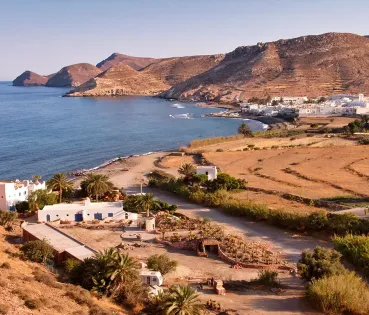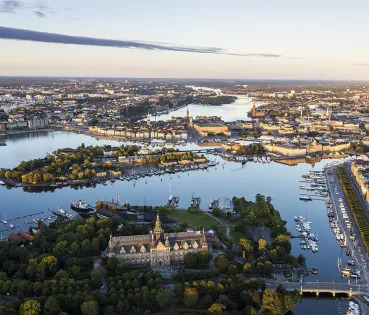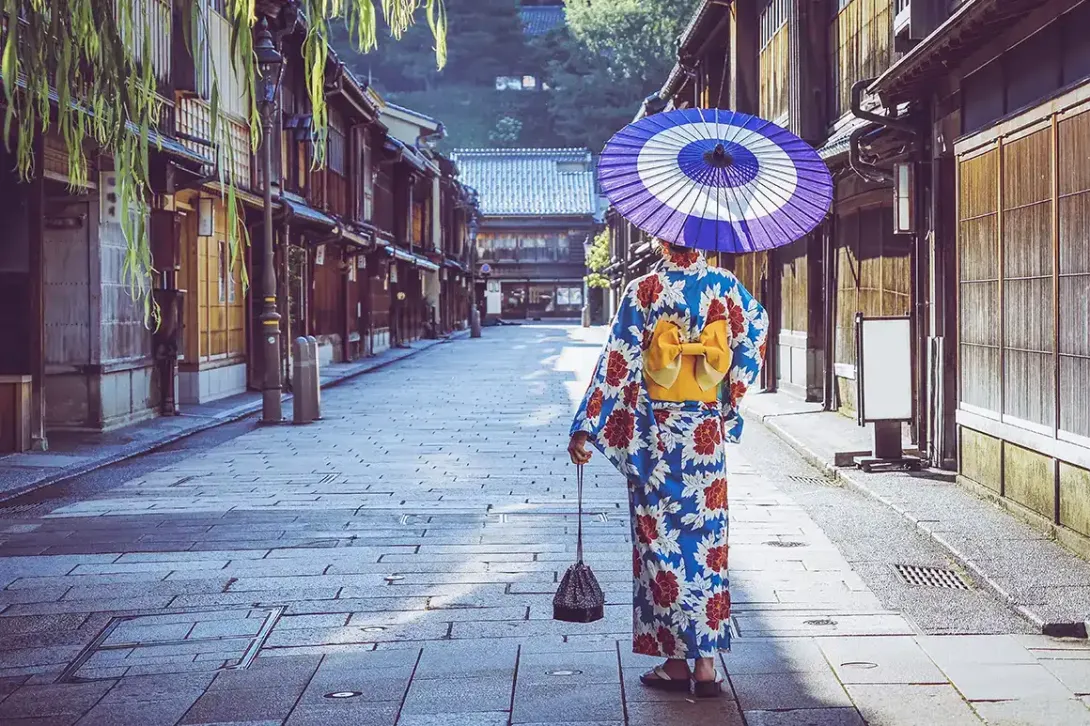
Kanazawa: mixing amongst Geishas and Samurais
This attractive enclave on the coast of the Sea of Japan contains several districts from the Edo period that conserve all their historical charm.
Although most of the areas with working Geishas are located in Kyoto, they are also present in other regions of Japan. One of these is the historic city of Kanazawa, an attractive enclave on the coast of the Sea of Japan that has seen its popularity shoot up in recent years thanks to the arrival of the bullet train, which connects it to Tokyo in just two and a half hours. The city, located in the prefecture of Ishikawa, has three different Geisha districts: Hagashi Chaya, Nishi Chaya and Kazuemachi. In the Edo period (1603-1868), all of them contained a large number of tea houses in which the “butterflies of the night” entertained the merchants and nobles.
Currently they maintain the aesthetics and ambience of those times: streets flanked by tea houses with wooden trellises on the façades and little porches jutting out from the second floors where the guest rooms are located, with tatami mats and exquisite decoration. In Higashi Chaya you can, for example, visit the Kaikaro tea house, which is over two hundred years old, and have a matcha green tea. But only during the day: it is not open to tourists at night-time, because it hosts banquets with Geishas. Very popular amongst international visitors is the Shima tea house, converted into a thematic museum over one of the most refined rooms in the ‘neighbourhood of pleasure’. Today however, most of the old tea houses have become restaurants, cafes or small shops where you can acquire all kinds of articles (– even ice creams!), decorated with gold leaf, a historic tradition in this town. The craftsmen may also be observed working with this material, or you can take part in one of their workshops.
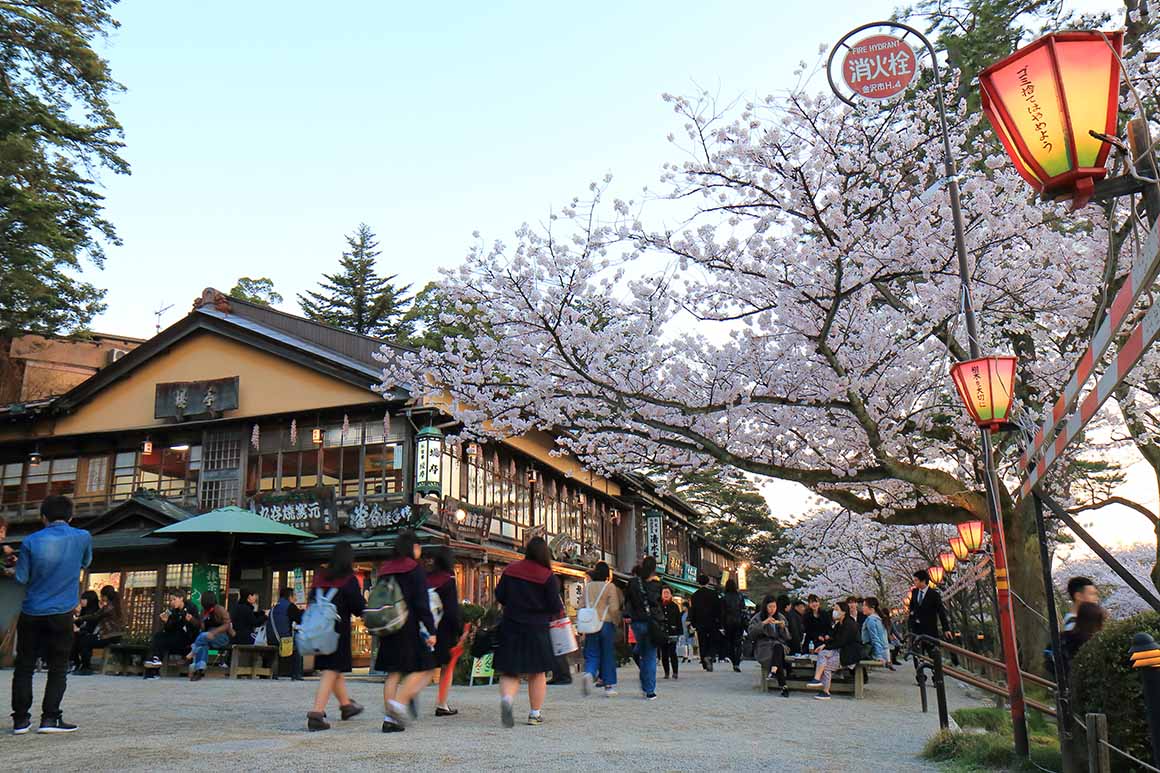
The ancient Samurai district of Nagamachi also dates back to the Edo period, maintaining all its historical charm with its narrow streets, winding canals and many bukeyashiki (traditional Samurai residences), perfectly conserved and protected by stone walls. Some of them, such as the Namura house or the ancient home of the Takada family are open to the public and allow visitors to understand how these mythical warriors lived.
Fabric dyeing workshops and kimonos for hire
Very close to the Samurai district are the Kenrokuen gardens, considered to be some of the most beautiful gardens in Japan. In order to make the experience more unique, it is possible to hire a kimono in some of the nearby specialised businesses and walk through the park dressed in it. Those who are fascinated by these eye-catching garments can also visit the Kaga Yuzen Kimono Centre, a stone’s throw from the gardens, to carry out a technical dyeing course or observe how the skilful craftsmen paint kimonos following traditional techniques.
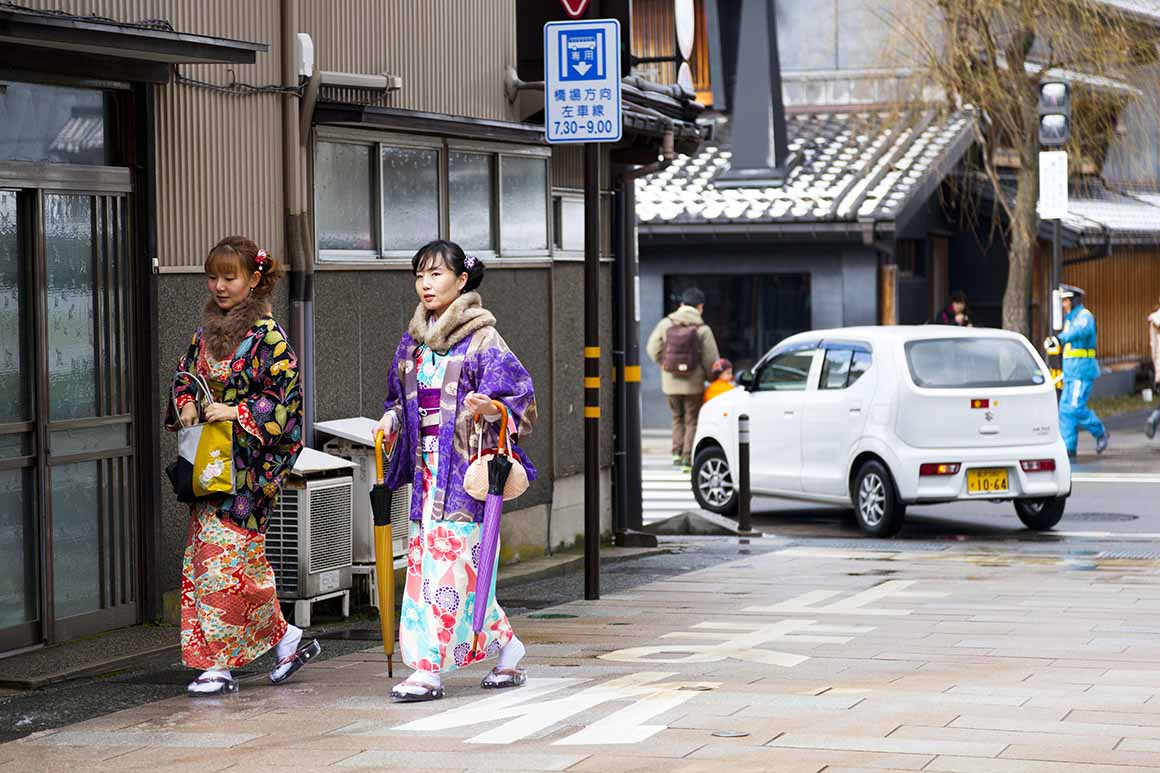
Essential visits in the area include the Kanazawa castle, with its imposing walls and moats and the Oyama Jinja sanctuary, with a history going back over three hundred years and considered to be the city’s protector. The neighbouring district of Katamachi should also not be missed, a charming network of alleyways – the most famous one being Chuo Mishokugai, full of tiny bars of the izakaya type, which are usually frequented by the Japanese after work.
If we wish to enjoy the gastronomy along with the locals, we must also visit the Omicho market, which since 1721 has provided the city’s inhabitants with fresh produce. Some of the stands have tables where you can sit and sample the grilled meat, fish or seafood. From November to March, many Japanese people travel to Kanazawa to enjoy the flavour of the snow crabs, a coveted crustacean that is obtained along the nearby coasts o f the Sea of Japan.

Another local star product is the sake. The Ishikawa prefecture is famous for having both crystal clear water and high quality rice, meaning that the sake that is prepared there is highly renowned all over Japan. In addition to the many bars that offer tastings of the endless varieties of this drink, distilleries may be visited, such as the Koganei, a historical factory where this liqueur has been produced for over two hundred years.
Those with a sweet-tooth will not be able to resist trying the Japanese sweets (wagashi), prepared with rice, red beans and sugar, as along with Kyoto and Matsue, Kanazawa is considered to be one of the best destinations to try them, owing to its long tradition of the tea ceremony. A real temptation to which more than one person will happily surrender.

